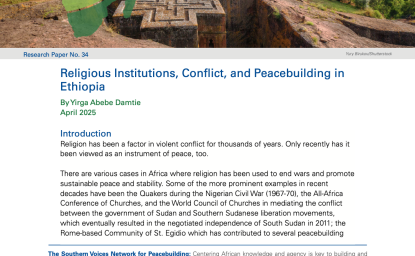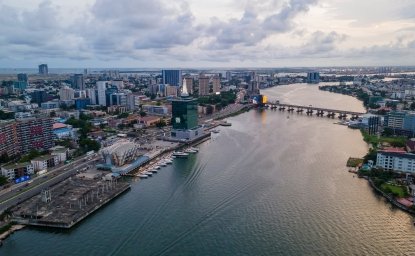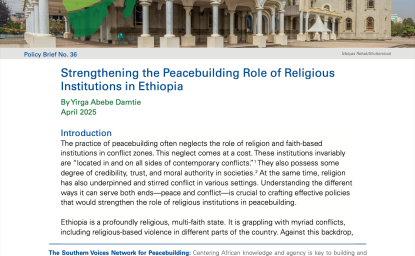I
n a year filled with conflict, it can be easy to miss the bright spots. Escalating tensions between the Democratic Republic of Congo (DRC) and Rwanda could have erupted into a full-blown war, potentially ranking as the world’s largest humanitarian crisis of 2024. Instead, innovative US and Angolan efforts to de-escalate tensions between the DRC and Rwanda avoided a region-wide conflagration. As a result, the parties continued work on a ceasefire deal signed in July, and during his historic Angola visit in December, President Biden thanked President Lourenço for his leadership and mediation of the conflict.
In late 2023, with DRC’s December presidential elections looming, tensions between DRC and Rwanda were on the rise. A truce between the DRC government and the Rwanda-backed M23 armed group had collapsed, and Rwandan forces and M23 rebels were moving deeper into DRC.
In November 2023, US Director of National Intelligence Avril Haines embarked on a diplomatic mission to de-escalate tensions, shuttling between Kigali and Kinshasa. Presidents Kagame and Tshisekedi agreed to specific confidence-building measures toward de-escalation, and the US government committed to monitoring their progress.
As the top US intelligence official, Haines brought high-level, sustained engagement and a unique tool kit. Haines helped provide intelligence to hold both sides accountable to ceasefire commitments. US officials convened regular meetings with their Rwandan and Congolese counterparts, sharing information backed by real-time data on the parties’ progress, or lack thereof, on implementing their commitments. This structured monitoring process exposed ceasefire violations quickly and provided a venue for the parties to address them.
Less than a month after Haines’ trip, the parties agreed to a 72-hour ceasefire that included a repositioning of forces to allow displaced civilians to return to their homes. The ceasefire was broadly adhered to. Crucially, just five days before the DRC’s election, the parties agreed to extend the ceasefire through the DRC election.
The US mediation surge was in support of the resumption of African-led efforts, namely the Nairobi and Luanda processes, which had long sought to address the factors perpetuating this longstanding conflict. In July, the White House welcomed the ceasefire between the parties. In late November, the Congolese and Rwandan Foreign Ministers approved a concept of operations for Rwandan troops to disengage from Congolese territory, and Angolan officials now chair a joint DRC-Rwanda committee to monitor implementation.
While there are violations of the ceasefire and Congolese and Rwandans are far from resolving their long-standing conflict, US and Angolan efforts over the past year have seeded “genuine prospects for peace” despite the daunting challenges. As always, implementation will depend on the parties’ will to do so. Further, US and Angolan innovations in intelligence-driven mediation and ceasefire monitoring and verification could shape future peacemaking efforts across the continent and beyond.
Author

Africa Program
The Africa Program works to address the most critical issues facing Africa and US-Africa relations, build mutually beneficial US-Africa relations, and enhance knowledge and understanding about Africa in the United States. The Program achieves its mission through in-depth research and analyses, public discussion, working groups, and briefings that bring together policymakers, practitioners, and subject matter experts to analyze and offer practical options for tackling key challenges in Africa and in US-Africa relations. Read more

Explore More
Browse Insights & Analysis
Religious Institutions, Conflict, and Peacebuilding in Ethiopia

Spying on Poachers

